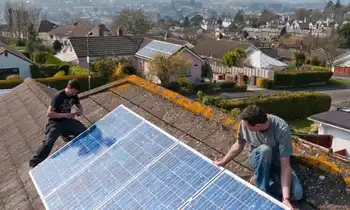NIPSCO seeks 15 per cent rate hike
MERRILLVILLE, INDIANA - Northern Indiana Public Service Co. is seeking a pair of electric rate hikes that could boost residential utility bills nearly 15 percent by 2010.
Representatives of the Merrillville, Ind.-based utility told the Indiana Utility Regulatory Commission that the rate increases are needed to cover increased operating and maintenance costs, and to bring the Sugar Creek generating facility in Terre Haute, Ind., on line.
Hammond, Ind., Mayor Tom McDermott Jr., who opposes the increases, said customers deserve a rate cut.
“In a time like this, where people are paying $4 for a gallon of gas and people losing their homes and jobs, it’s ridiculous for a company to be asking for any increase,” he told the IURC.
Last month, McDermott and LaPorte County attorney Shaw Friedman announced their intent to oppose NIPSCOÂ’s proposed rate increase before the IURC.
Hearings on the case will start Jan. 6 with a public hearing set for sometime early in the year. The IURC will make the final ruling on the rates, and NIPSCO will receive a final decision in late 2009 or early 2010.
NIPSCO spokesman Nick Meyer said the proposed rate structure reflects the cost to serve each customer group. Increases will likely be lower among commercial and industrial customers.
“With residential customers, there’s a lot more costs associated with servicing and transmission,” Meyer said.
The Citizens Action Coalition will begin combing through NIPSCOÂ’s more than 1,000-page petition soon, said Jerry Polk, the lawyer representing the coalition in the rate case.
The rate request is only for electric service. NIPSCO also provides natural gas service for much of the northern third of Indiana.
Related News

China boosts wind energy, photovoltaic and concentrated solar power
BEIJING - China leads renewable energies, installing more wind power, solar thermal and photovoltaic than any other country, but also leads CO2 emissions, and much remains to be done.
The effective application of Chinas renewable energy law has boosted the use of renewable energy in the country and facilitated the rapid development of the sector, a report said.
The report on compliance with renewable energy law was presented today at the current bimonthly session of the Standing Committee of the National Peoples Assembly (APN).
Electricity generated by renewable energy amounted to about 1.87 trillion kilowatts per hour in 2018, representing 26.7 percent of…




